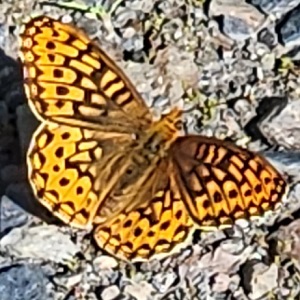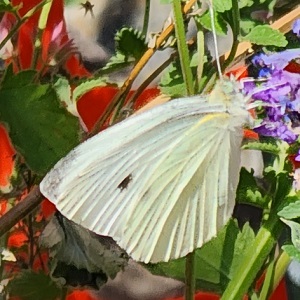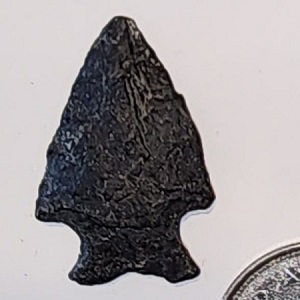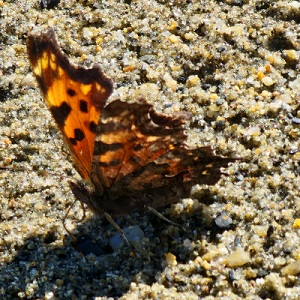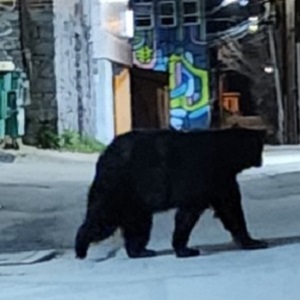Home
The Calgary Comic & Sci Fi Expo
- Details
- Written by: Rod Boyle
- Category: Miscellany
- Hits: 2255
Lured in by the promise of something new, something different, something a little outside of the box (my box at least) I took the kids to the Calgary Sci Fi, Fantasy & Comic expo this weekend at the BMO Center on the Stampede Grounds.
I've never been.
$12.00 parking. I should have taken them on the bus.
And my line "These are not the droids you're looking for" went right over the parking attendants head. So much for that NLP course....
The Expo, $25.00 per person, the daughter gets in free. Already down now $62.00. And inside, hundreds of booths selling Comics, people dressed up as their favorite comic characters, some attractive girls as ensigns in Star Trek Uniforms, others, less attractive and less modestly attired, the full range of comic book & Sci Fi characters that I've never become acquainted with. And there are comic artists there autographing books, drawing their comics, there are the celebrities (a 4 hour wait to meet Leonard Nimoy, Brent Spiner, and others...), it is definitely a different world.
Not my world. I can definitely appreciate the art of the Manga, the graphic novels, the comics, there's a lot of work and talent goes into it. But I'm not familiar enough with the scene to have a favorite artist, 99% of the characters and zombies roaming the convention are simply interesting costumes to me, I have no appreciation for the hidden plots and jokes.
The others, the crowds of people in "the Scene", they're having a field day. You see them taking pictures with costumes they recognize, chatting with other conventioneers, making outlandish bulk purchases of $180.00 lightsabers, the girl, she recognizes a few of the Star Wars characters, there's Boba Fett and a Storm Trooper and Princess Leia, but she's too shy to wear her Darth Vader Costume.
Occasionally I catch the eye of other parents there, children in tow, there's the exchange of glances and the mutual recognition that we're both strangers in a strange land, the reciprocal sympathy ....
The boy, he enjoys it, finds some books to buy, I take his picture with an attractive girl I thought was from the Twilight franchise, but was apprised later by the boy that she wasn't, god knows what she was famous for, we wait around in a 6 deep press to see Leonard Nimoy return from lunch to greet his fans, while waiting a cute blonde comes up on roller skates, she's promoting roller derbies, there's one on May 8th, I ask if they'll be wearing the same costume she's wearing, (tightly knit corset and hotpants...) she says their opponents will, and I promise to consider it.
Afterwords, a late lunch, the boy sums it up, he had a good time but he noticed there was definitely the...
"...distinct smell of Mom's basement...:"
He's hit the nail on the head. I appreciate his insight, but I'm busy planning our next adventure outing. A roller derby. There's something different.
I've never been.
Week 2 - Garage Sale Summary
- Details
- Written by: Rod Boyle
- Category: Miscellany
- Hits: 2044
I called it wrong. AN hour in line for a box of neckties, (given to the boys at work, who could use a bit of fashion help), a couple of oversized waistcoats for a rather oversized waiter (not that oversized, as it turned out..), and a vintage leather coat, not that I needed another one but it was too good to leave. All in all a rather mediocre haul.
I had my doubts, thought that perhaps it would have been better to start at the Northmount sale, but that would have involved the plotting of new bus routes, and the sad thing is, no matter where you go the best finds will always have been elsewhere... Some days are like that.
Sunday went to the Ramsay parade of Garage sales, again nothing of merit, a pair of beautiful brass church sconces, embossed with crosses, they would have made my weekend but sadly they weren't for sale, merely bait to lure in customers, the house, from the outside a rather decrepit and nondescript 1 1/2 story wartime bungalow, on the inside proved to be a proper granny's attic filled to the ceiling with lamps and candlesticks, glittering heaps of antique glass doorknobs, but alas no bargains. And the surveying of the rest of the neighborhood turned up no treasures whatsoever.
What you ask for VS what you get...
- Details
- Written by: Rod Boyle
- Category: Miscellany
- Hits: 2350
The boy was going to spend Easter break in the Dominican Republic, and so I asked him, if it wasn't too much trouble, to pick me up some Dominican amber. A nice big piece with a baby Tyrannosaurus Rex embedded inside, or maybe a large dragonfly or centipede, he wouldn't have to buy it as apparently you can just find it on the beaches, it didn't have to be polished as I'd prefer to discover the treasure inside myself like those little dinosaur hunting kits you can buy for children....Blue amber would be terrific...
Of course he didn't get me any amber. He doesn't in any way share my passion for antiquities, gems or fossils. But he did get me...
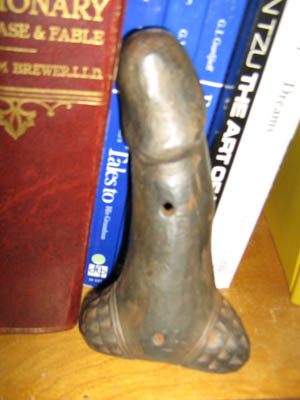
A penis flute. And, in it's own way it's perfect, so aptly illustrating the gap between what you ask for and what you get. Personally, I want to give one to all my friends at work, but he only got me the one.
(**Note. Having tried to play it it only has 2 notes. Not a very exciting musical instrument, I'm afraid. But an amusing souvenir....)
Week 2 - The Good Samaritan Rummage Sale
- Details
- Written by: Rod Boyle
- Category: Miscellany
- Hits: 2319
Probably the highlight of the year. An early morning tomorrow, in line by 8:00 AM, by 9:00 there will be close to three hundred people waiting.
It's one of the best sales around.
And tonight was the Christ Church Rummage Sale, also very good, but sadly work interfered. SO many rummage sales, so little time.
There's another one at the corner of Northmount and Northland Drive tomorrow as well, but it starts at 8:30 and I'll be in line waiting for the Samaritan Rummage sale to start. It's a gamble, the Northmount one is good as well, past finds have included rosaries, a gingerbread clock (not working) and a cuckoo clock, a trombone, miscellaneous other rubbish, but the Good Samaritan Rummage sale is the most accessible and so wins out. I'll report on my finds later....
Page 818 of 890




